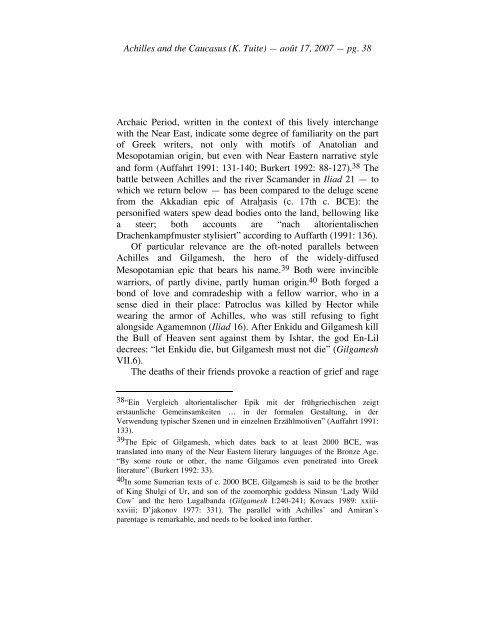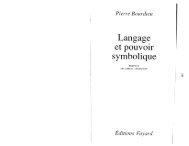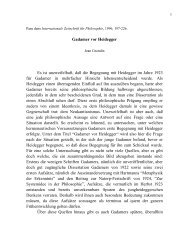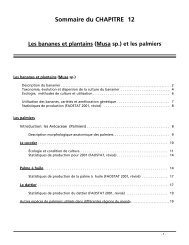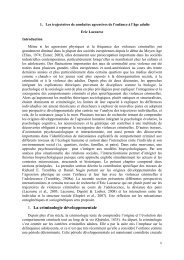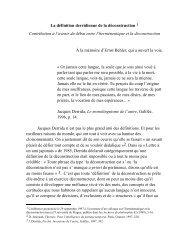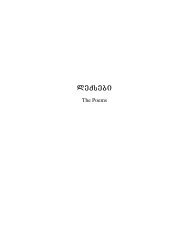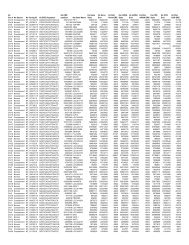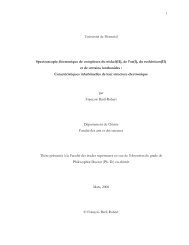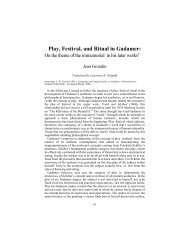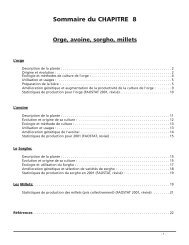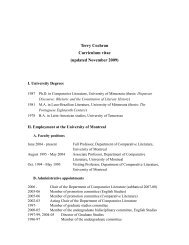Achilles and the Caucasus - Université de Montréal
Achilles and the Caucasus - Université de Montréal
Achilles and the Caucasus - Université de Montréal
You also want an ePaper? Increase the reach of your titles
YUMPU automatically turns print PDFs into web optimized ePapers that Google loves.
<strong>Achilles</strong> <strong>and</strong> <strong>the</strong> <strong>Caucasus</strong> (K. Tuite) — août 17, 2007 — pg. 38<br />
Archaic Period, written in <strong>the</strong> context of this lively interchange<br />
with <strong>the</strong> Near East, indicate some <strong>de</strong>gree of familiarity on <strong>the</strong> part<br />
of Greek writers, not only with motifs of Anatolian <strong>and</strong><br />
Mesopotamian origin, but even with Near Eastern narrative style<br />
<strong>and</strong> form (Auffahrt 1991: 131-140; Burkert 1992: 88-127). 38 The<br />
battle between <strong>Achilles</strong> <strong>and</strong> <strong>the</strong> river Scam<strong>and</strong>er in Iliad 21 — to<br />
which we return below — has been compared to <strong>the</strong> <strong>de</strong>luge scene<br />
from <strong>the</strong> Akkadian epic of Atraḫasis (c. 17th c. BCE): <strong>the</strong><br />
personified waters spew <strong>de</strong>ad bodies onto <strong>the</strong> l<strong>and</strong>, bellowing like<br />
a steer; both accounts are “nach altorientalischen<br />
Drachenkampfmuster stylisiert” according to Auffarth (1991: 136).<br />
Of particular relevance are <strong>the</strong> oft-noted parallels between<br />
<strong>Achilles</strong> <strong>and</strong> Gilgamesh, <strong>the</strong> hero of <strong>the</strong> wi<strong>de</strong>ly-diffused<br />
Mesopotamian epic that bears his name. 39 Both were invincible<br />
warriors, of partly divine, partly human origin. 40 Both forged a<br />
bond of love <strong>and</strong> comra<strong>de</strong>ship with a fellow warrior, who in a<br />
sense died in <strong>the</strong>ir place: Patroclus was killed by Hector while<br />
wearing <strong>the</strong> armor of <strong>Achilles</strong>, who was still refusing to fight<br />
alongsi<strong>de</strong> Agamemnon (Iliad 16). After Enkidu <strong>and</strong> Gilgamesh kill<br />
<strong>the</strong> Bull of Heaven sent against <strong>the</strong>m by Ishtar, <strong>the</strong> god En-Lil<br />
<strong>de</strong>crees: “let Enkidu die, but Gilgamesh must not die” (Gilgamesh<br />
VII.6).<br />
The <strong>de</strong>aths of <strong>the</strong>ir friends provoke a reaction of grief <strong>and</strong> rage<br />
38 “Ein Vergleich altorientalischer Epik mit <strong>de</strong>r frühgriechischen zeigt<br />
erstaunliche Gemeinsamkeiten … in <strong>de</strong>r formalen Gestaltung, in <strong>de</strong>r<br />
Verwendung typischer Szenen und in einzelnen Erzählmotiven” (Auffahrt 1991:<br />
133).<br />
39 The Epic of Gilgamesh, which dates back to at least 2000 BCE, was<br />
translated into many of <strong>the</strong> Near Eastern literary languages of <strong>the</strong> Bronze Age.<br />
“By some route or o<strong>the</strong>r, <strong>the</strong> name Gilgamos even penetrated into Greek<br />
literature” (Burkert 1992: 33).<br />
40 In some Sumerian texts of c. 2000 BCE, Gilgamesh is said to be <strong>the</strong> bro<strong>the</strong>r<br />
of King Shulgi of Ur, <strong>and</strong> son of <strong>the</strong> zoomorphic god<strong>de</strong>ss Ninsun ‘Lady Wild<br />
Cow’ <strong>and</strong> <strong>the</strong> hero Lugalb<strong>and</strong>a (Gilgamesh I:240-241; Kovacs 1989: xxiiixxviii;<br />
D’jakonov 1977: 331). The parallel with <strong>Achilles</strong>’ <strong>and</strong> Amiran’s<br />
parentage is remarkable, <strong>and</strong> needs to be looked into fur<strong>the</strong>r.


